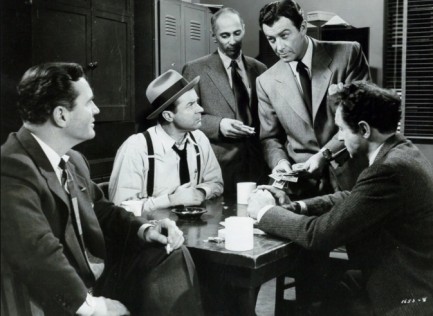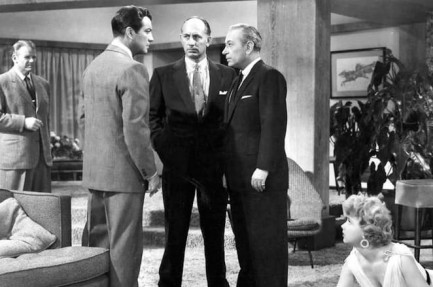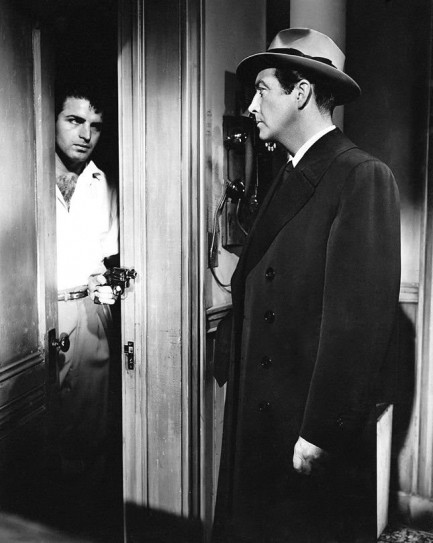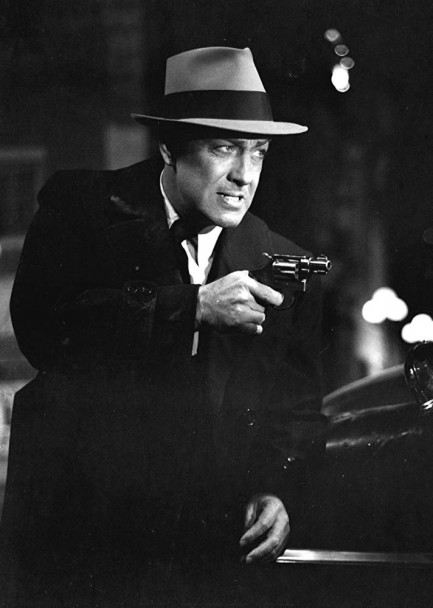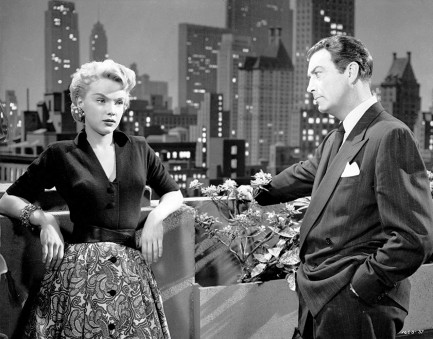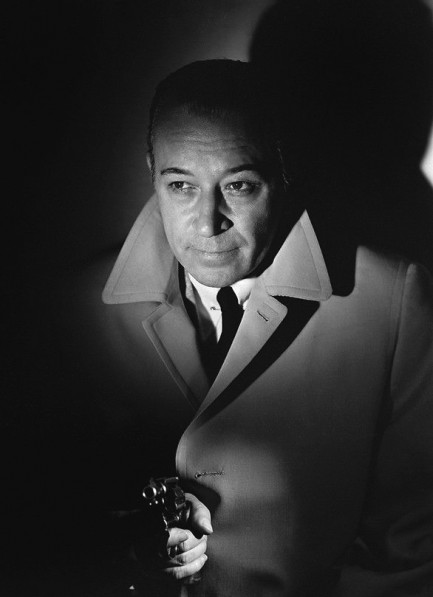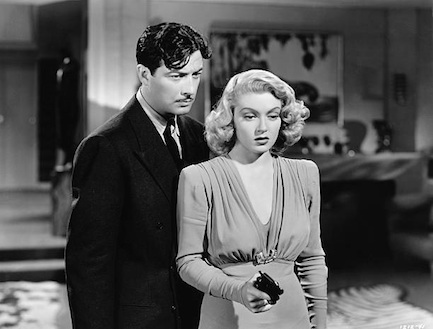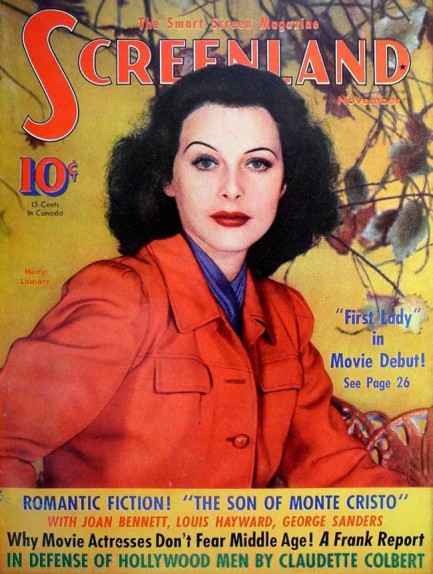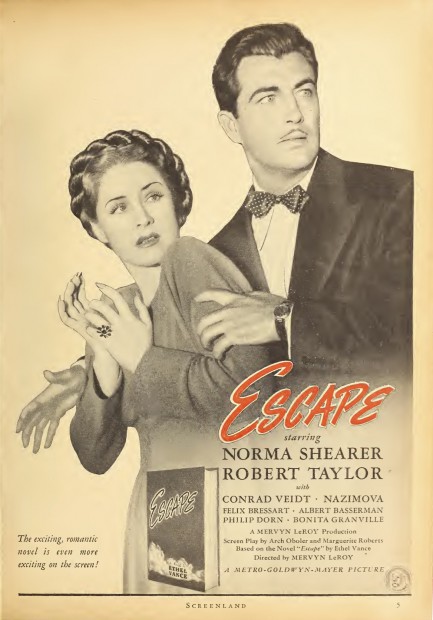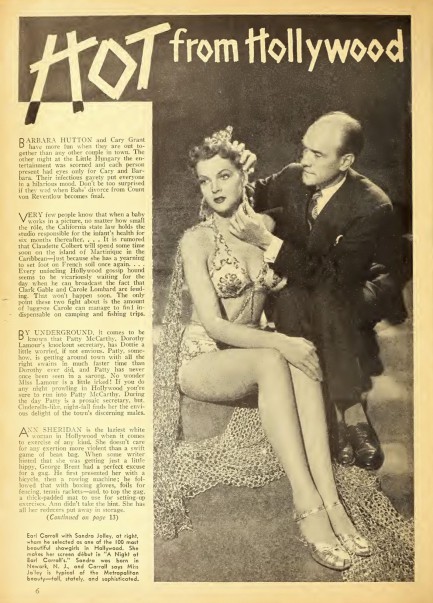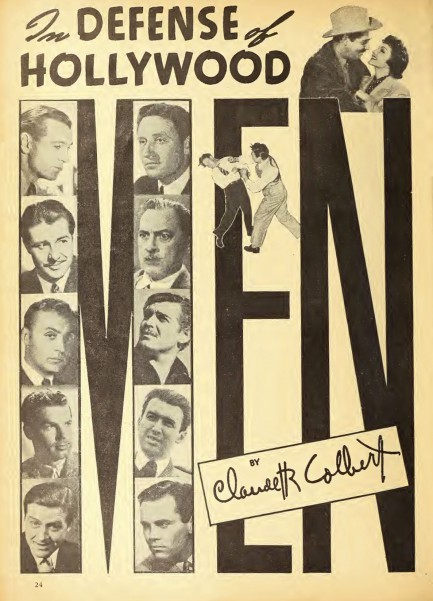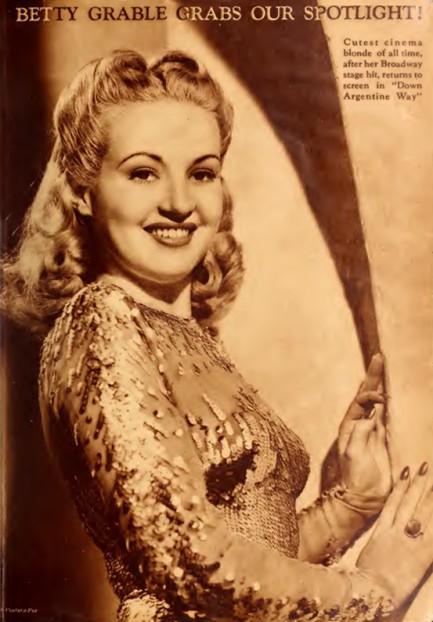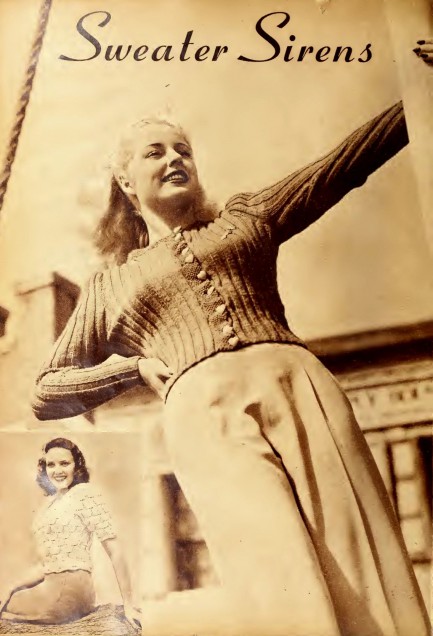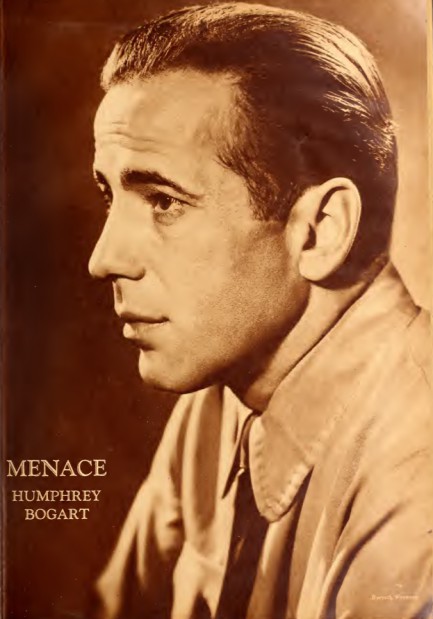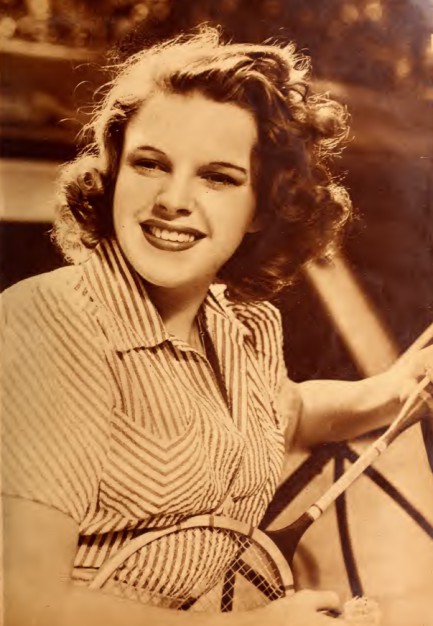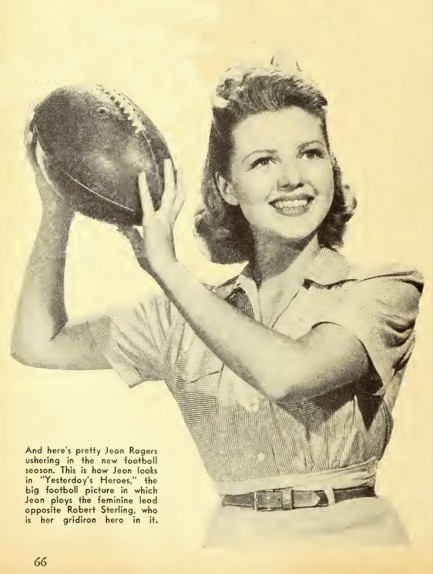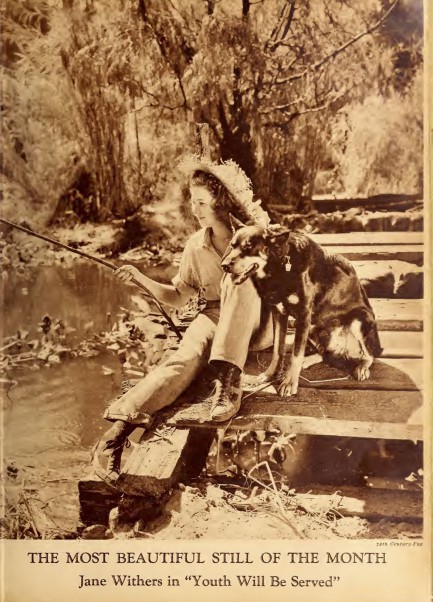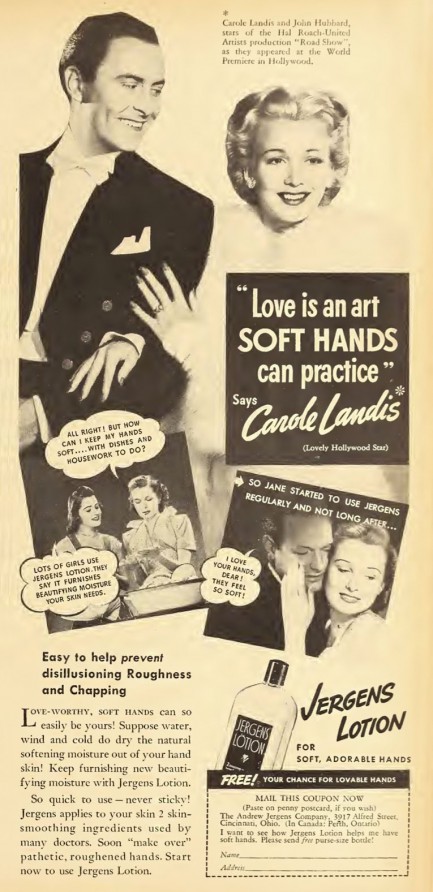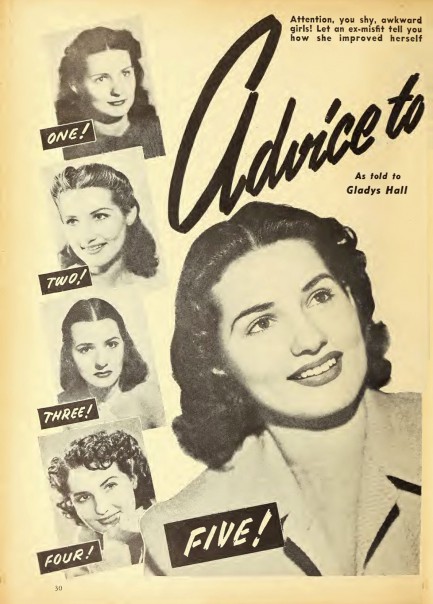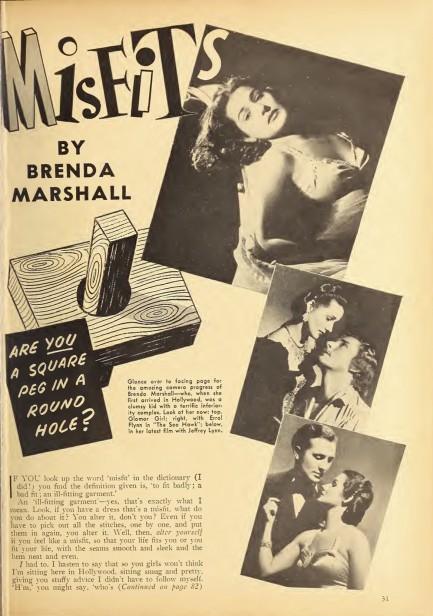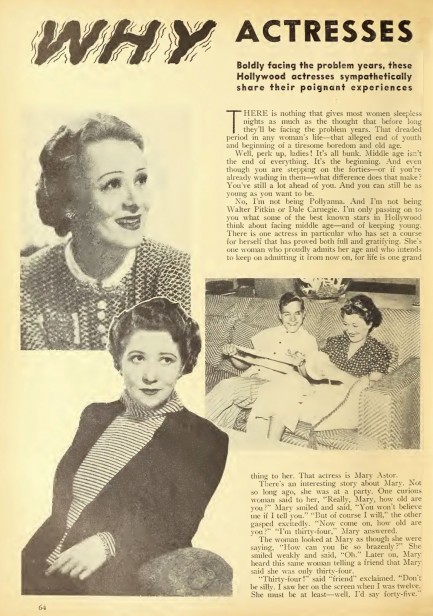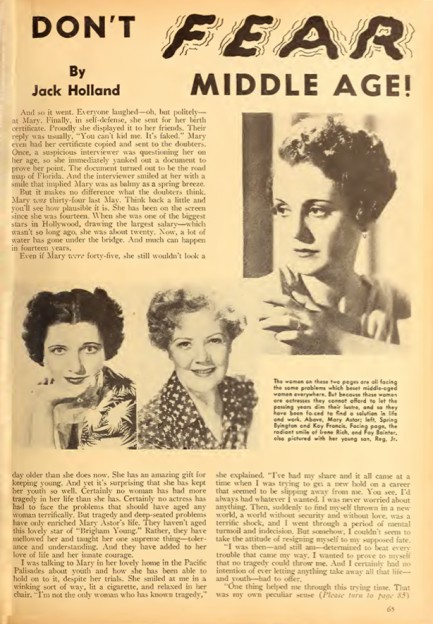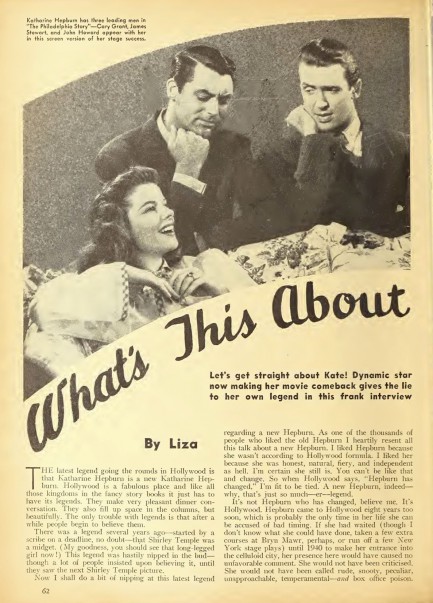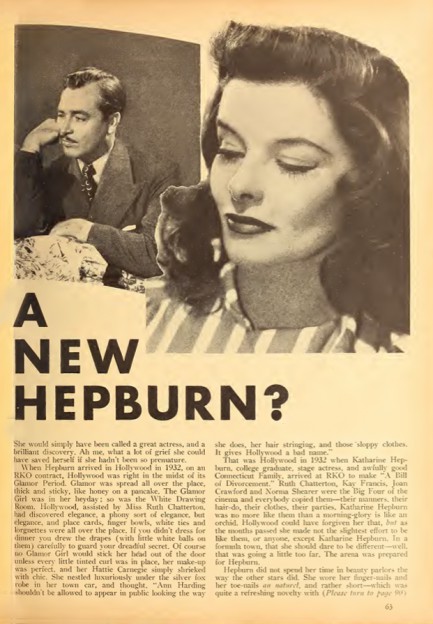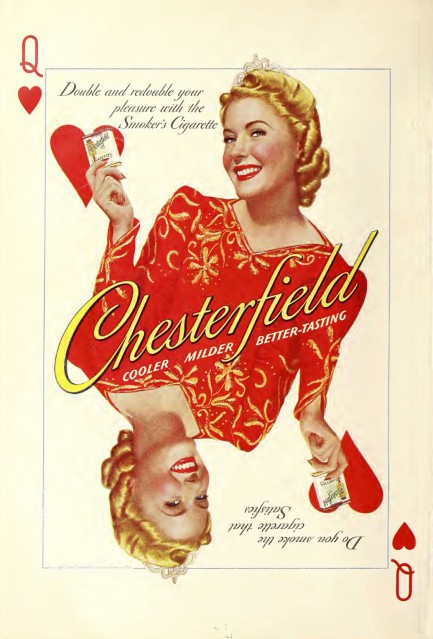 Taylor and Turner make an explosive pairing in hit gangster romance. 
MGM produced a beautiful poster for its 1941 melodrama Johnny Eager, which you see here in all its vibrancy and clever design. Starring Robert Taylor and Lana Turner, the unknown creator or creators used the stars' names crossword style to include “TNT” into the text. MGM knew they had something special on their hands in Turner and had been trundling her out for audiences to goggle at in awe and wonder, building up her career in comedy, musicals, straight drama, a western, and even horror in 1941's Dr. Jekyll and Mr. Hyde. Now at age twenty it was time for her to co-anchor a crime melodrama.
Turner is a sociology student who crosses the path of an ex-con named John Eager (Taylor) at his parole office. Turner is smitten, as well as impressed with Taylor's efforts to stay on the straight and narrow by working as a cab driver. The problem is Taylor is actually running an elaborate scam, heading a criminal enterprise in the form of a profitable gambling racket while keeping his parole officer bamboozled, and others either paid off or bedazzled into silence. Such is his charm that even the head secretary at the parole office is helping him.
Turner, as an innocent young student who isn't in on the scam, of course throws a wrench in Taylor's plans by finding out he's lying. But it turns out she's a little more worldly than she at first seemed. When she learns Taylor is still an underworld goon she's fine with it. She's just gotta have the guy. It means jilting her square boyfriend and disappointing her protective dad, plus she's warned that disaster will result, but the heart wants what it wants. Will she be corrupted? Will Taylor become so loopy that he loses control of his empire? Can true love blossom in the barren soil of the organized crime underground?
In the end Johnny Eager is a smart, well-written movie, with memorable lines aplenty and several refreshing plot surprises. Burgeoning superstar Turner does just fine in her key role, and it helps that her surrounding cast are all confident and talented. Van Heflin even won a supporting actor Academy Award for his role as a poetry spouting, alcoholic sidekick to Taylor's smooth gangster, and the accolade was well deserved. Johnny Eager is a movie every vintage film buff should add to their queue. It premiered today in 1941.
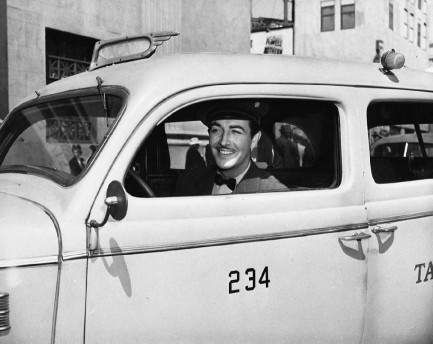 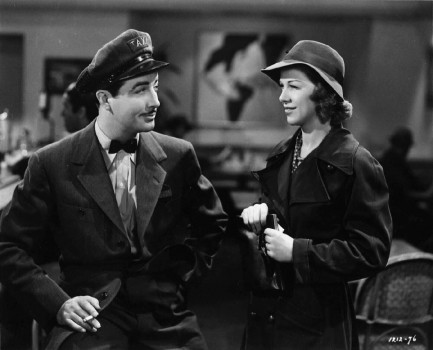 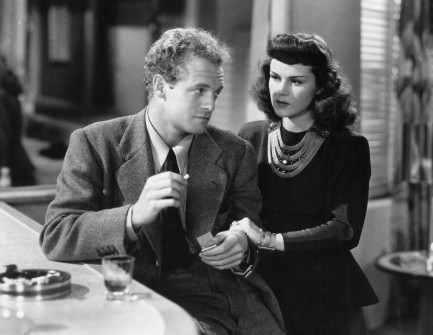 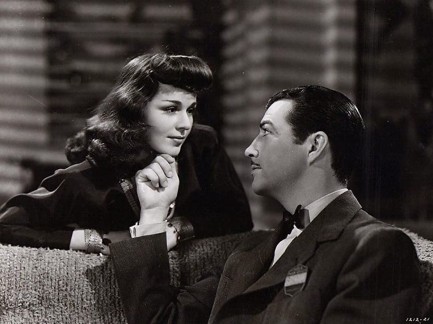 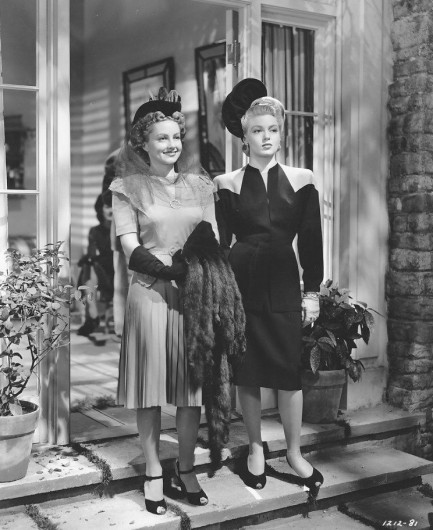 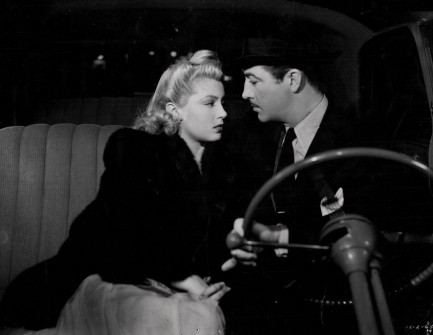 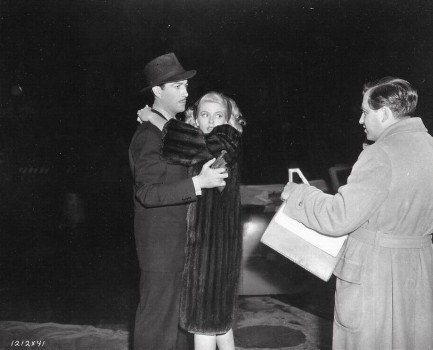 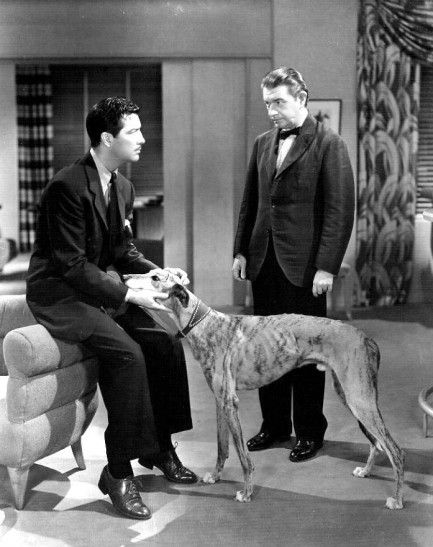 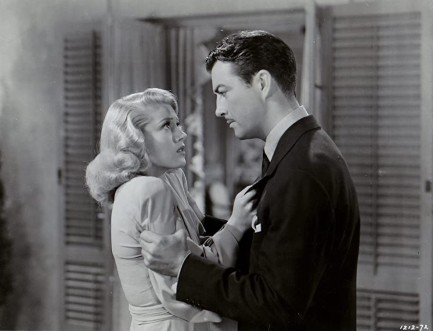 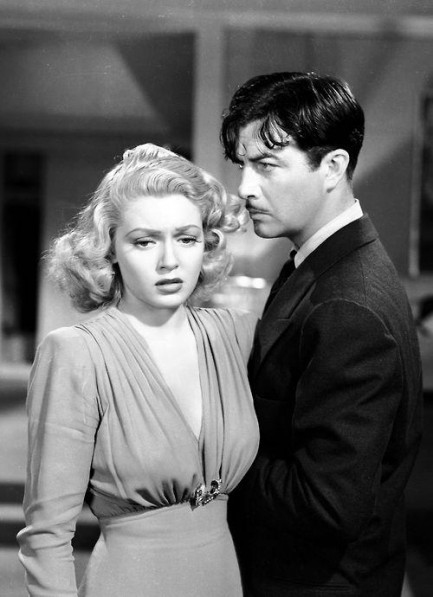 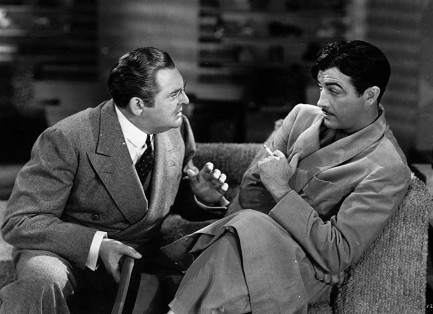 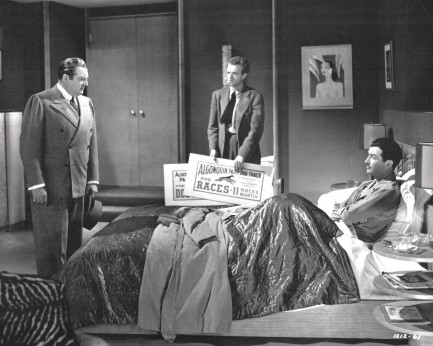 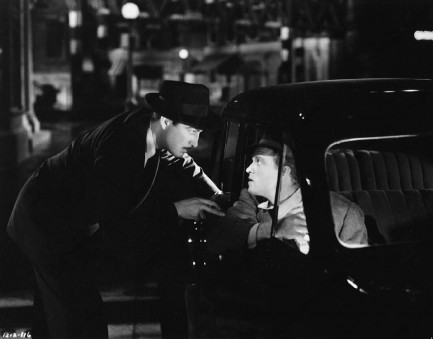 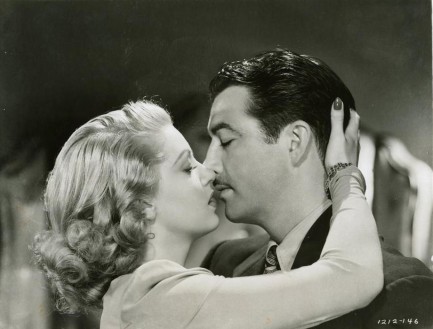
 Got a secretive husband? Poke around and see what you find. What's the worst that can happen? 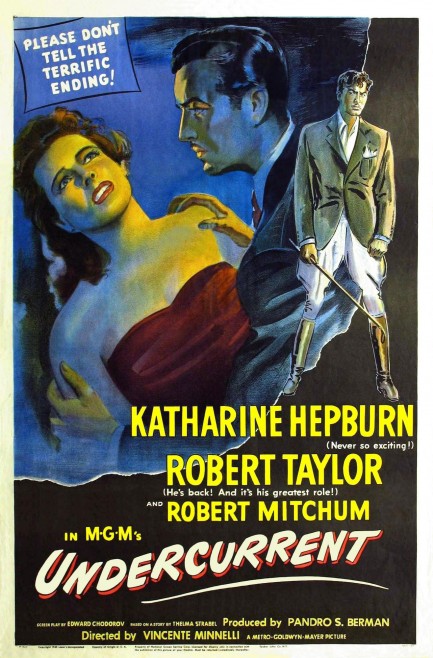
Two days ago we discussed Katherine Hepburn's cinematic output and noted that Undercurrent was one of the few movies that qualified as pulp-style. We watched it last night and it falls into the always fun husbands-with-dark-secrets sub-genre. Hepburn marries into a rich San Francisco family and quickly finds that her hubby Robert Taylor is prone to sudden rages whenever he's reminded about aspects of his past. You know the drill: “Who was playing that song! Who's here? Was it you? Where did you learn that song!” Taylor is particularly sensitive with regard to his estranged possibly dead brother, and so are Taylor's employees, his domestic staff, and even his friends. Seems everyone is in on the secret except Hepburn. In typical suspense movie fashion, she decides to solve that problem by digging deeper.
Undercurrent is categorized on many websites as a film noir, because that's where people's minds go if there are any night scenes or shadows in a black and white flick, but you may be disappointed if you have such expectations. It's categorized as suspense drama by the American Film Institute, which we consider correct. You could even categorize it as a romantic suspense drama, one with shades of Alfred Hitchcock's 1940 film Rebecca. But on the other hand, since film noir is more a mood than a genre, there's always room for debate concerning whether a film should or shouldn't be included. For us, Undercurrent shouldn't. Two sequences bear some visual elements of film noir, and there's a brief nightmare interlude, but without the overarching cynicism and desolate central characters, we don't think it's a good fit.
Hepburn, who was probably never cynical or desolate in her entire career, occupies nearly every frame of Undercurrent and gives an emotional, almost melodramatic performance as a wife whose loyalty and belief in her husband are tested. To succeed fully in her role, she'd have needed better chemistry with Taylor, and the script and plot would have needed to be scintillating. None of those things happen, which means Hepburn isn't given the tools required to anchor the film. Even so, she gives it a hell of a go, and her efforts make it watchable. For her fans this one is a no-brainer—queue it up. For more general film buffs, you can probably take a pass. Undercurrent premiered today in 1946.
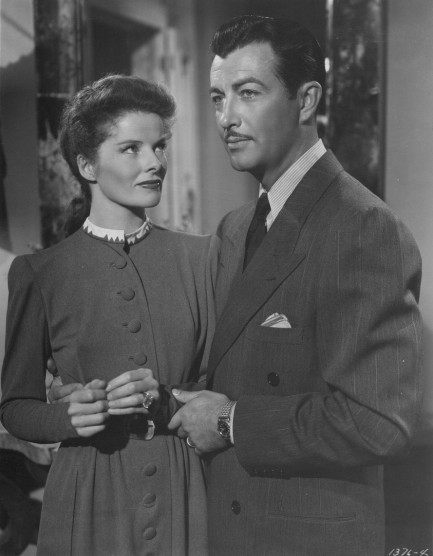 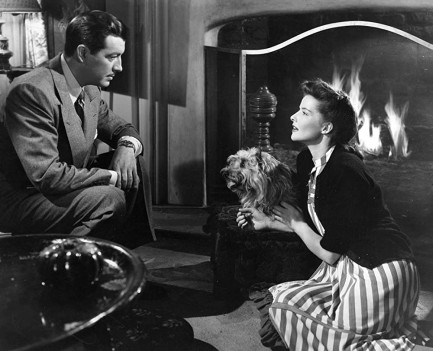 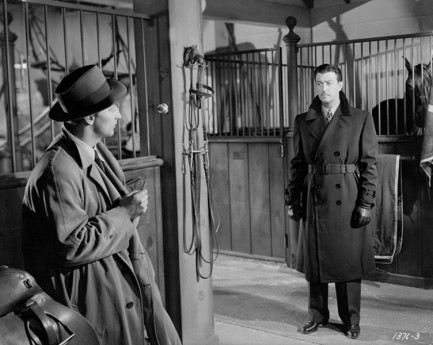 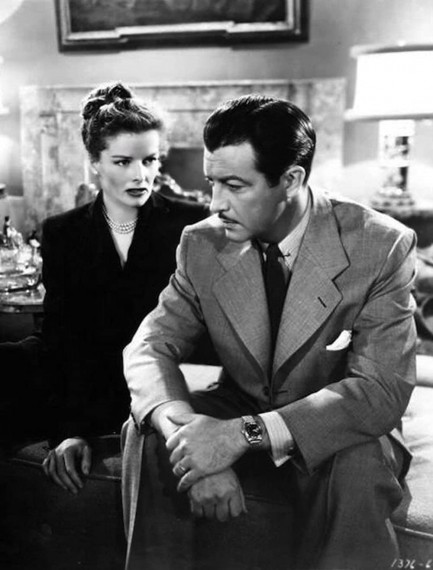 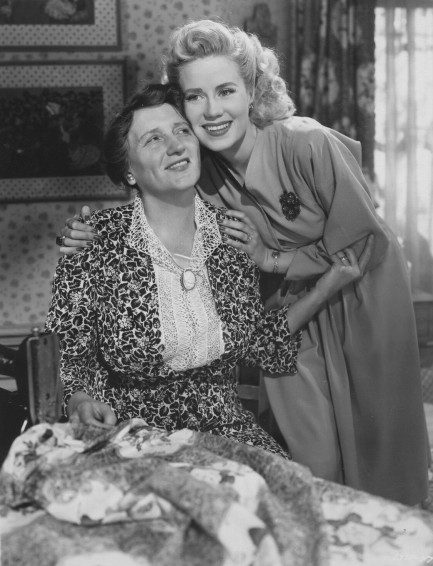  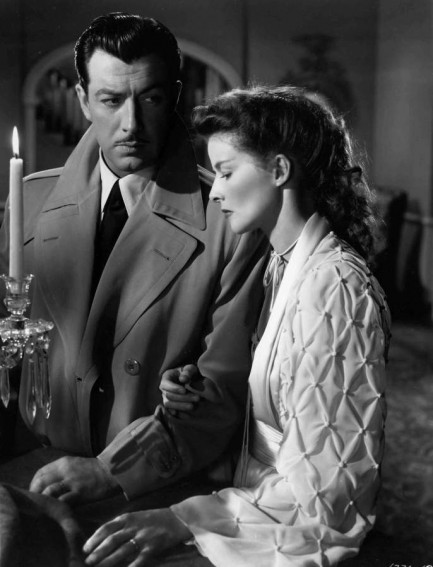 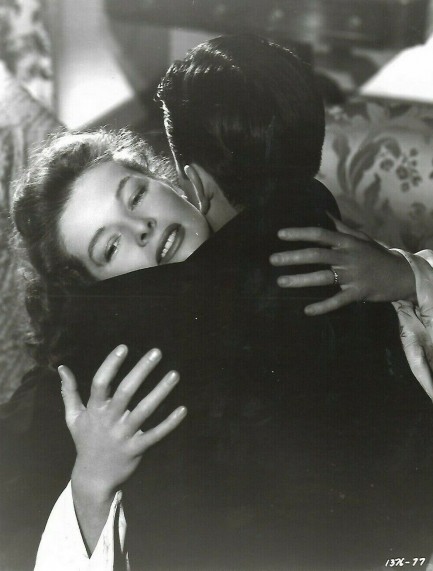 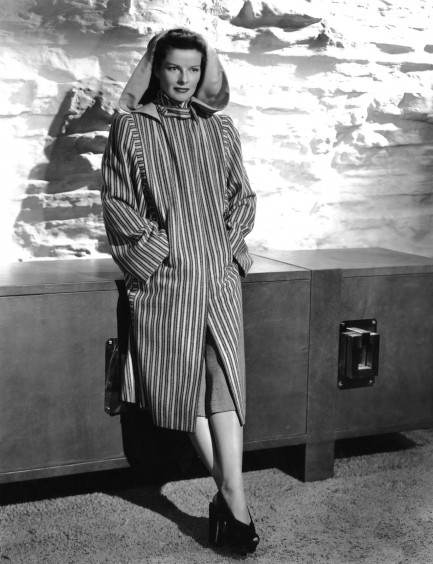 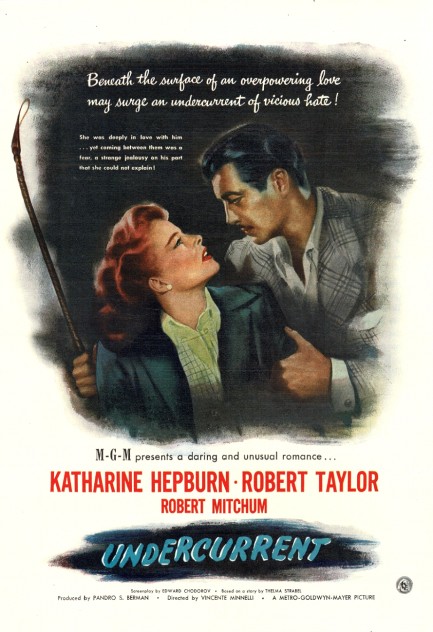
 Robert Taylor plays the bad cop blues. 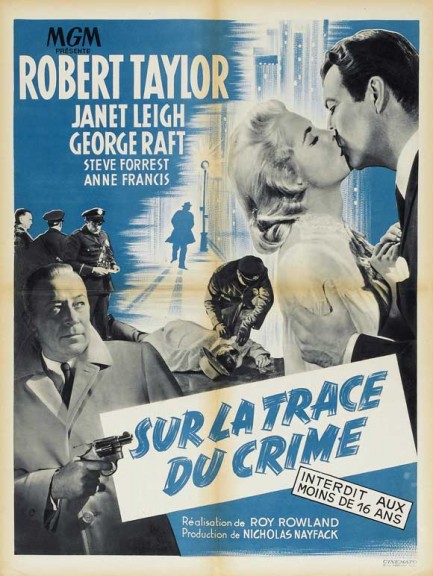
Here you see a nice blue promo poster for Sur la trace du crime, better known as Rogue Cop, with Robert Taylor, George Raft, and Janet Leigh. We talked about this last year. Shorter version: decent but not great. It opened in France today in 1955.
 To protect and serve—his own self-interest. 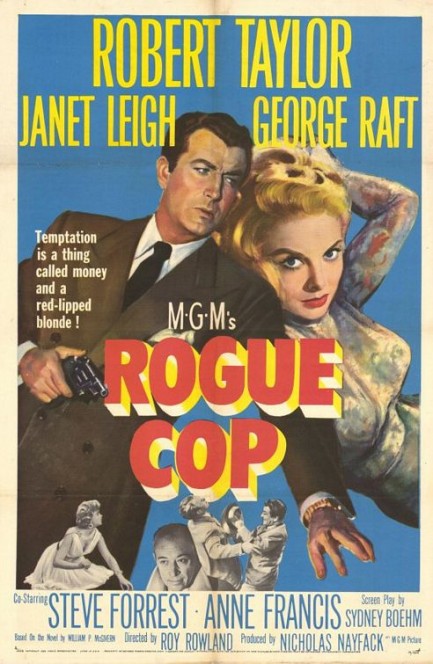
As bad cops in mid-century cinema go, Robert Taylor is not close to the worst, but he's pretty bad. Rogue Cop gives its take on an archetypal story—two brothers, played by Taylor and Steve Forrest, end up on opposite sides of the law. Both are cops, but Taylor has been dirty for years, moonlighting for gangsters. When they tell him to make his squeaky clean brother refuse to testify against one of their assets, the brother answers no. This, of course, makes Taylor's gangster pals resolve to plant baby brother under the dirt. Taylor turns against his puppetmasters, instead resolving to bring them down. Or try, anyway.
Taylor and Forrest as the good and bad brothers (complete with black hair on Taylor and golden locks on Forrest) are solid, George Raft co-stars as the mean-ass, woman-beating, head hood, and Anne Francis goes against type to play an (almost) irredeemable drunk. An extra attraction here is a young Janet Leigh, and she's good too, though the script makes her out to be unrealistically weak. Hey, but no film is perfect. Well, actually some might be. Just not this one. But it's good enough. It premiered today in 1954.
 Some jobs you can do better all by yourself. 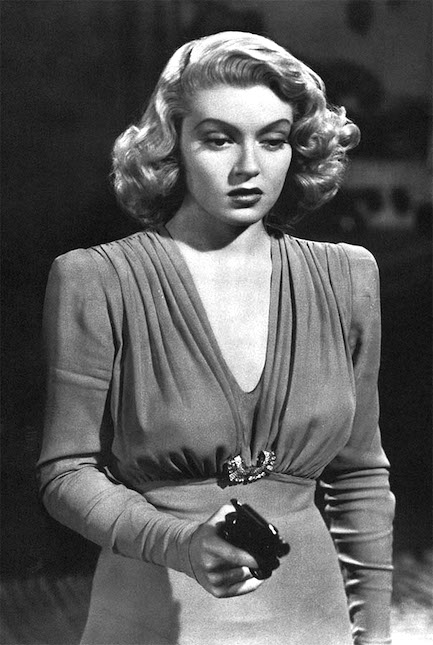
This photo of Lana Turner was made when she was filming the crime thriller Johnny Eager, and what's interesting about it is that co-star Robert Taylor, who played the titular Mr. Eager, was erased from an original MGM promo shot. Apparently, whoever altered the shot felt Turner didn't need Taylor in a supervisory role, so he was magically vanished. If only it were always that easy to get someone off your back. The photo is from 1941.
 As far as we’re concerned the answer is still no. 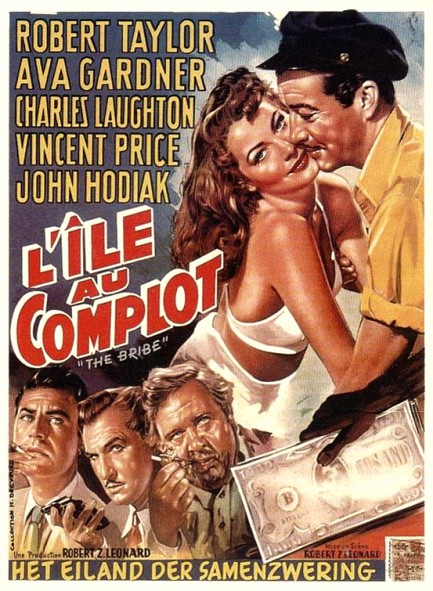
We already wrote about 1949’s The Bribe and thought the movie was so-so. What isn’t so-so is the Belgian poster, which features text in both French and Dutch, and was used for the movie’s run as L'ile au complot. It’s so good it almost makes us want to watch the movie again. Almost… See our original write-up and some nice production photos here.
 Taylor/Gardner adventure story about contraband airplane engines never quite takes flight. 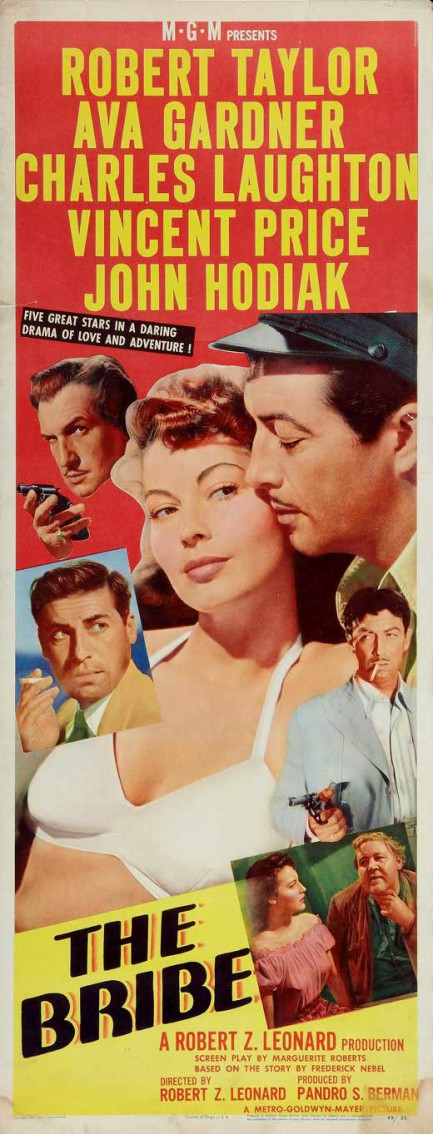
The film noir adventure The Bribe stars Robert Taylor and Ava Gardner, along with Vincent Price, Charles Laughton, and reliable John Hodiak, in the story of a government agent prowling the fictional Central American island of Carlotta under orders to put the kibosh on a racket in stolen airplane engines. The film has several beloved noir elements—voiceover narration, sexually loaded repartee, exotic nightclub serving as hub for the action, smoky musical number by the female lead—but it’s all a bit stale. There’s no heat between Taylor and Gardner, and no adrenaline in the plot. Frederick Nebel’s short story probably made the airplane engine angle work, but on the big screen it’s hard to care about hunks of machinery we never see. The movie is a cut-rate Casablanca without the invaluable letters of transit, a muted To Have and Have Not without the urgency of French resistance vs. the Nazis. On the plus side, some of the sets are cool, the final shoot-out is visually fascinating, and Gardner is sizzling hot. For her fans she doubtless makes the movie watchable all by herself. The Bribe premiered in the U.S. today in 1949.
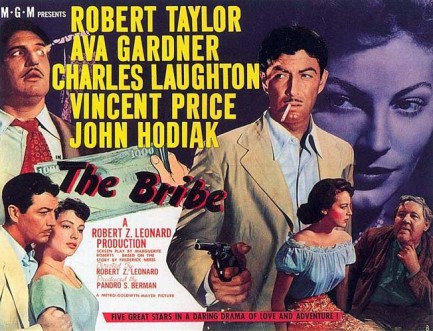 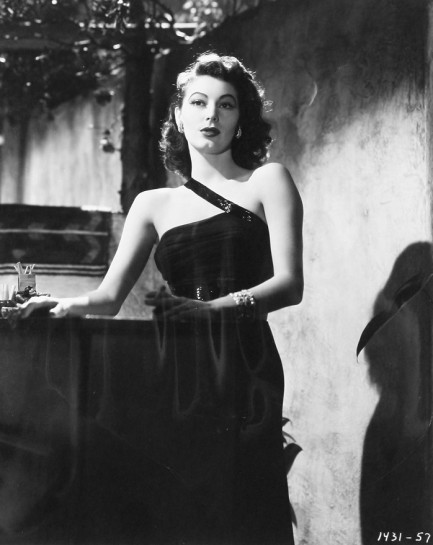 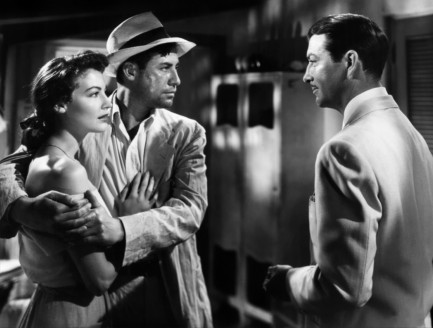 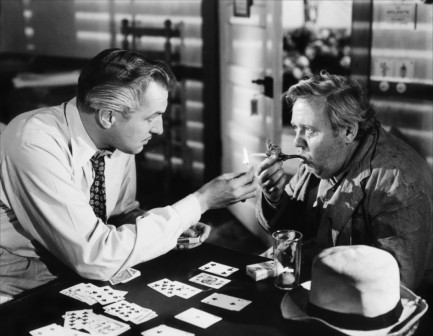 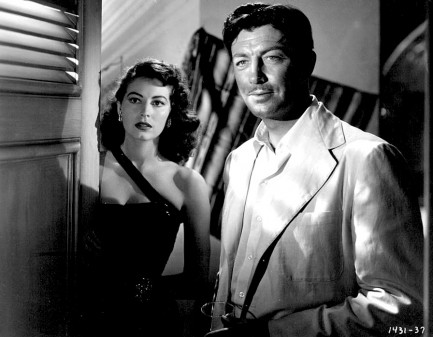
 Another tabloid comes and goes. 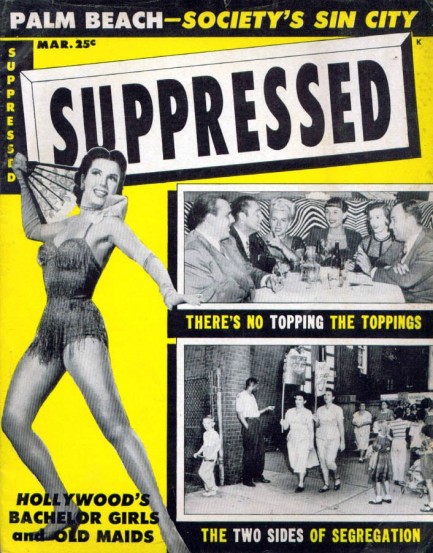
Here’s another new tabloid for our ever-expanding collection, the mid-tier Suppressed. So far, we’ve seen issues only from 1954 through 1956, so we can safely assume it didn’t last long. It isn’t for lack of effort, though. The layouts are interesting and designers even splash self-promoting logos throughout the mag, but all for naught, apparently. In this particular issue, published in March 1955, we learn about the Topping family, whose patriarch Dan Topping was part owner and president of the New York Yankees from 1945 to 1964. We get profiles of Mara English, Robert Taylor, and a story about John Wayne and his three marriages. And we learn that there were two sides to segregation. Silly us, we thought the two sides were the right one and the wrong one, but Suppressed schools us in all the sociological nuances of state-sponsored apartheid. What a treat! More Suppressed later.
|
 |

The headlines that mattered yesteryear.
1945—Mussolini Is Arrested
Italian dictator Benito Mussolini, his mistress Clara Petacci, and fifteen supporters are arrested by Italian partisans in Dongo, Italy while attempting to escape the region in the wake of the collapse of Mussolini's fascist government. The next day, Mussolini and his mistress are both executed, along with most of the members of their group. Their bodies are then trucked to Milan where they are hung upside down on meathooks from the roof of a gas station, then spat upon and stoned until they are unrecognizable. 1933—The Gestapo Is Formed
The Geheime Staatspolizei, aka Gestapo, the official secret police force of Nazi Germany, is established. It begins under the administration of SS leader Heinrich Himmler in his position as Chief of German Police, but by 1939 is administered by the Reichssicherheitshauptamt, or Reich Main Security Office, and is a feared entity in every corner of Germany and beyond. 1937—Guernica Is Bombed
In Spain during the Spanish Civil War, the Basque town of Guernica is bombed by the German Luftwaffe, resulting in widespread destruction and casualties. The Basque government reports 1,654 people killed, while later research suggests far fewer deaths, but regardless, Guernica is viewed as an example of terror bombing and other countries learn that Nazi Germany is committed to that tactic. The bombing also becomes inspiration for Pablo Picasso, resulting in a protest painting that is not only his most famous work, but one the most important pieces of art ever produced. 1939—Batman Debuts
In Detective Comics #27, DC Comics publishes its second major superhero, Batman, who becomes one of the most popular comic book characters of all time, and then a popular camp television series starring Adam West, and lastly a multi-million dollar movie franchise starring Michael Keaton, then George Clooney, and finally Christian Bale. 1953—Crick and Watson Publish DNA Results
British scientists James D Watson and Francis Crick publish an article detailing their discovery of the existence and structure of deoxyribonucleic acid, or DNA, in Nature magazine. Their findings answer one of the oldest and most fundamental questions of biology, that of how living things reproduce themselves.
|

|
|

It's easy. We have an uploader that makes it a snap. Use it to submit your art, text, header, and subhead. Your post can be funny, serious, or anything in between, as long as it's vintage pulp. You'll get a byline and experience the fleeting pride of free authorship. We'll edit your post for typos, but the rest is up to you. Click here to give us your best shot.

|
|
































